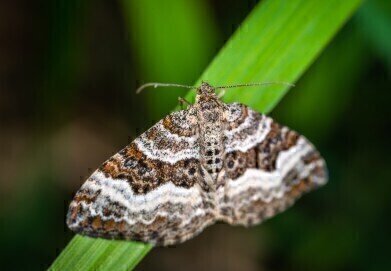GC, MDGC
Discovering How Insects Communicate — Chromatography Investigates
Feb 16 2015
In 1870s, a French naturalist Jean-Henri Fabre observed something remarkable in his study. Fabre studied insects, and one morning a Great Peacock Moth emerged from its cocoon — a female. Fabre placed the moth under a wire-gauze bell-jar so she could be studied. That evening Fabre’s son let out a scream and Fabre rushed into the room as described in his text The Life of the Caterpillar: ‘I hurry in. There is enough to justify the child's enthusiastic and hyperbolical exclamations, an invasion as yet unprecedented in our house, a raid of giant Moths.’
This intrigued Fabre as the male moths kept flocking to the female every night, no matter where he hid her — so it couldn’t be a visual stimulation. He spent several years studying the moths and he decided that the stimulus had to be a scent — not smelt by humans — released by the female and detected by the antennae of the males. But what form could the scent be?
EAG — A Step Forward
Chemists, biologists and entomologists continued the search for the chemicals that triggered the response, but the search was difficult due to the technology of the time. There was only one way to check whether a researcher had isolated a compound — and that was a behavioural assay which required insects to test the response to stimuli on. In 1957 a new device was developed which helped push forward research on pheromones.
The German biologist Dietrich Schneider used his expertise in electrophysiology to devise a method of detecting pheromones which didn’t rely on collecting insects. Schneider used the antenna from a male silk moth and connected two electrodes to it. When he released an extract containing pheromones from a female silk moth a signal was detected from the antenna. The device was named an electroantennagram or (EAG) — and finally gave researchers a tool that could be used to study the response to a pheromone.
Chromatography provides clean and pure smells
By the 1970s, improvements in gas chromatography allowed pheromone researchers the capability to separate the compounds they had extracted from insects. To identify the compounds, gas chromatography and mass spectroscopy were used and the response of an EAG to each compound was also noted — this way the researchers could identify the compounds that contained the pheromones.
Further developments in chromatography, particularly the use of capillary columns allowed better separation of compounds. Capillary GC offers a higher resolution than standard GC, allowing researchers better separation of the mixtures they extracted from insects, and GC-MS meant researchers were able to finally identify the compounds needed to stimulate a response.
Pest Control
One of the main uses of insect pheromones is in pest control. Researchers continue to search for pheromones to try and reduce the impact of insect pests on humans, without reaching for pesticides that may have a harmful impact on the environment. The result of pheromone research into bed bugs is discussed in this article: ‘Don’t Let the Bedbugs Bite’.
Digital Edition
Chromatography Today - Buyers' Guide 2022
October 2023
In This Edition Modern & Practical Applications - Accelerating ADC Development with Mass Spectrometry - Implementing High-Resolution Ion Mobility into Peptide Mapping Workflows Chromatogr...
View all digital editions
Events
Apr 23 2024 Kintex, South Korea
Apr 23 2024 Seoul, South Korea
Apr 28 2024 Montreal, Quebec, Canada
May 05 2024 Seville, Spain
May 15 2024 Birmingham, UK














